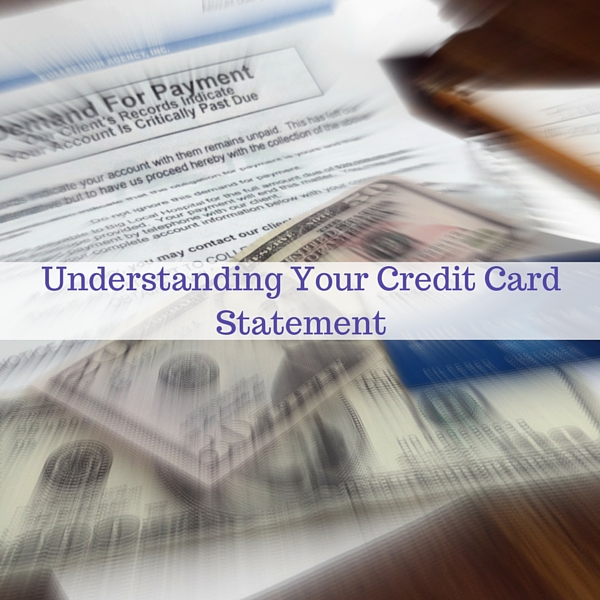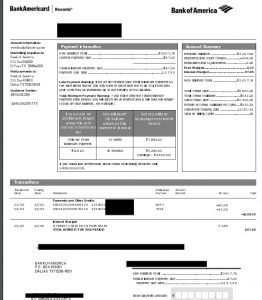
Payment Info
The first section of my credit card statement has the payment info listed. It shows you the balance total as well as the current payment that is due. Under that, it shows the total minimum payment that is due that month. It also has a late payment warning that explains to you the late fees that are associated with the account. There is also the total minimum payment warning that lets you know that it will take a longer time to pay off your balance if you only make the minimum payment. Below that is a box of that shows how much you’d pay if you only paid the minimum balance and then it shows how long it would take you to pay off if you made a larger amount. That area is good because it shows you that by paying only a little more on each bill you will be able to pay less in interest fees and you will pay the card off faster! That part of the statement is simple and very easy to read.
Account Summary

The next section is the account summary. The account summary shows you the previous balance. It also lists the payments & other credits, the purchases and the interest charged. Below that is the new balance total. Finally, the bill shows you the total credit line, the total credit that is available, the credit line, the portion of the credit that is available for cash, the statement closing date and the number of days in the billing cycle. All of that is information that you should pay attention to.
Transactions
The next area is the transactions section. It shows all of the payments and other credits to your account by the transaction date. It also shows the date the interest was charged to your account as well. Below that is a “totals for year to date” box. It shows you the amount of total fees that were charged for the particular year. It also shows you how much interest was charged. It is good to pay your card off each month so that you don’t have any interest charged.
Interest
The next area goes over the interest in detail. It gives you the APR for the purchases, balance transfers, direct deposit and cash advances. As always, the lower the interest rates the less your payment will be. Unfortunately, my APR for this particular credit card is pretty high. Because of past mistakes, I’m paying entirely too much interest for a credit card that I rarely use. At least, I’m not paying as much as this guy. If you have a credit card or decide to apply for one please pay attention to the interest rates.
Reward Points
The next section shows me my rewards points information. It also shows me the total amount of awards that I have as well as any that I earned that month.
Important Info
The last page of the statement has important info about the account. It gives you tips on how to dispute items if you ever need to. This page also gives you different ways that you can contact them if you have any inquiries. There is also miscellaneous info about interest and payments too.
Everyone that has a credit card should take a few minutes to read their statements every month. Understanding it can help you pay it off quick.



You know, I honestly can’t remember the last time I read my account statement. I pay off my credit card bill weekly online. I’m not even sure I know the interest rates anymore. :o/ Thanks for the reminder that I probably should!
This is very helpful, I just looked at my husbands debit card statement and I was shocked that I needed a ruler to even line up the correct prices. First thing to do when you get that statement is circle and add everything up. How much did you spend and where?